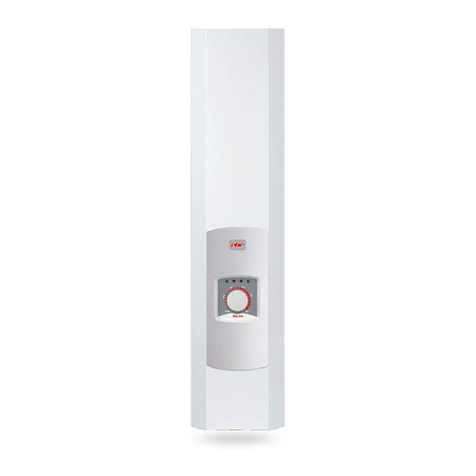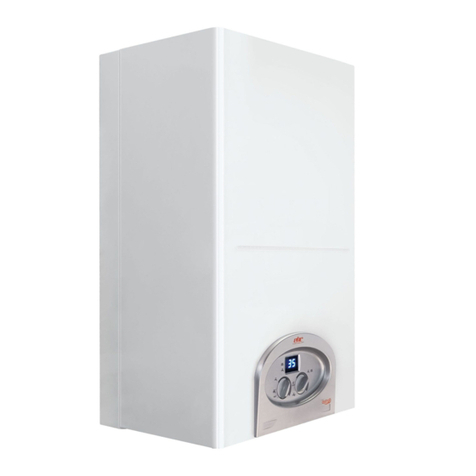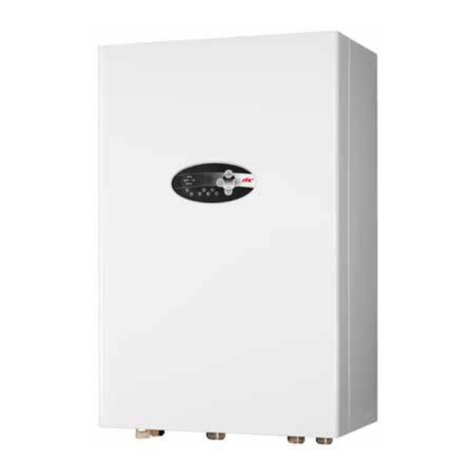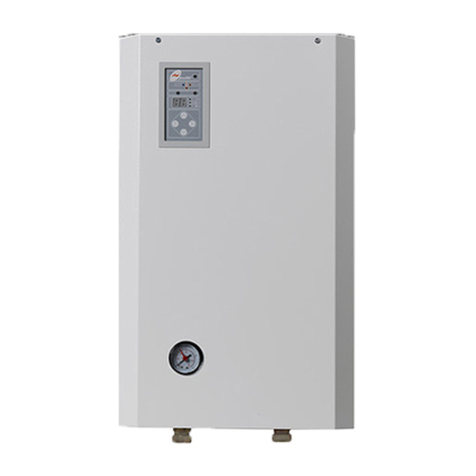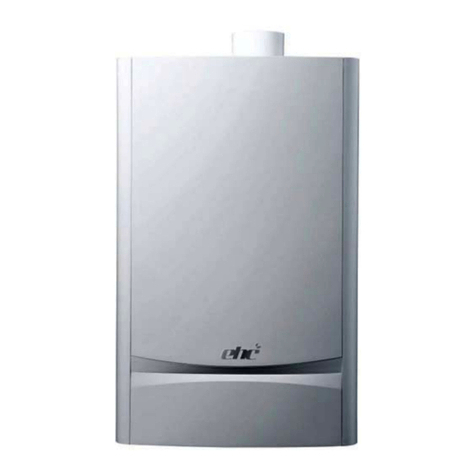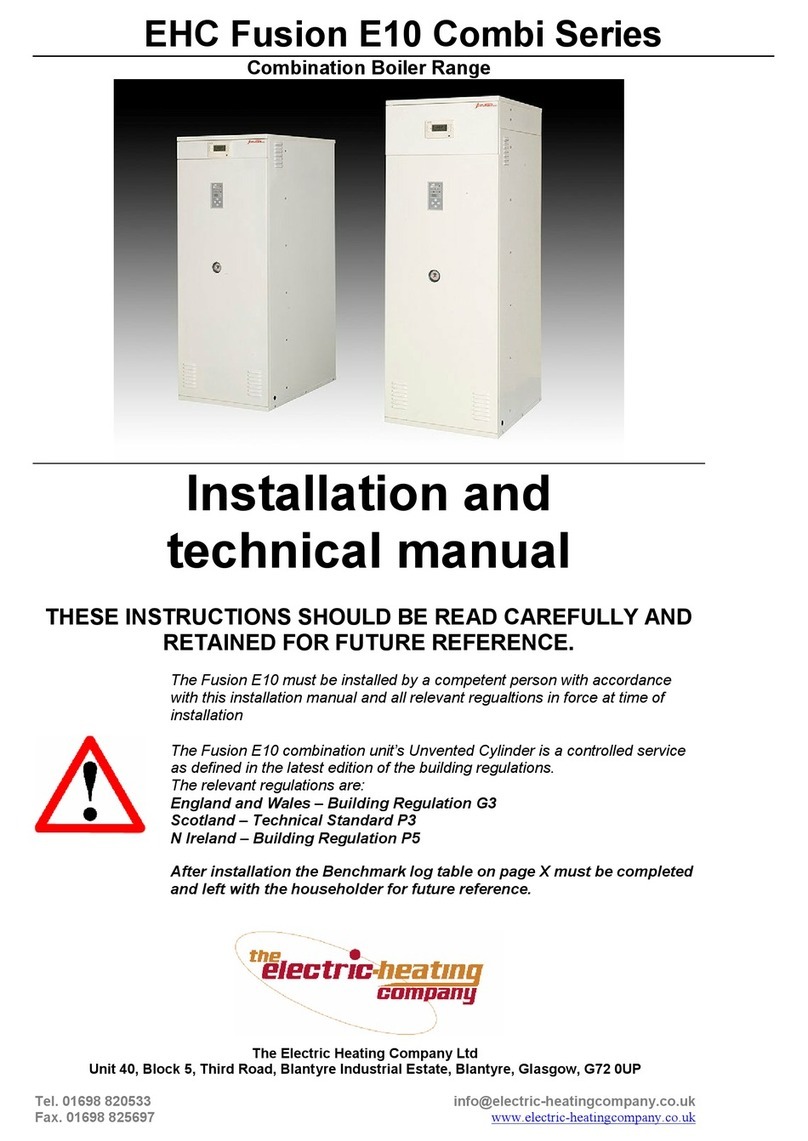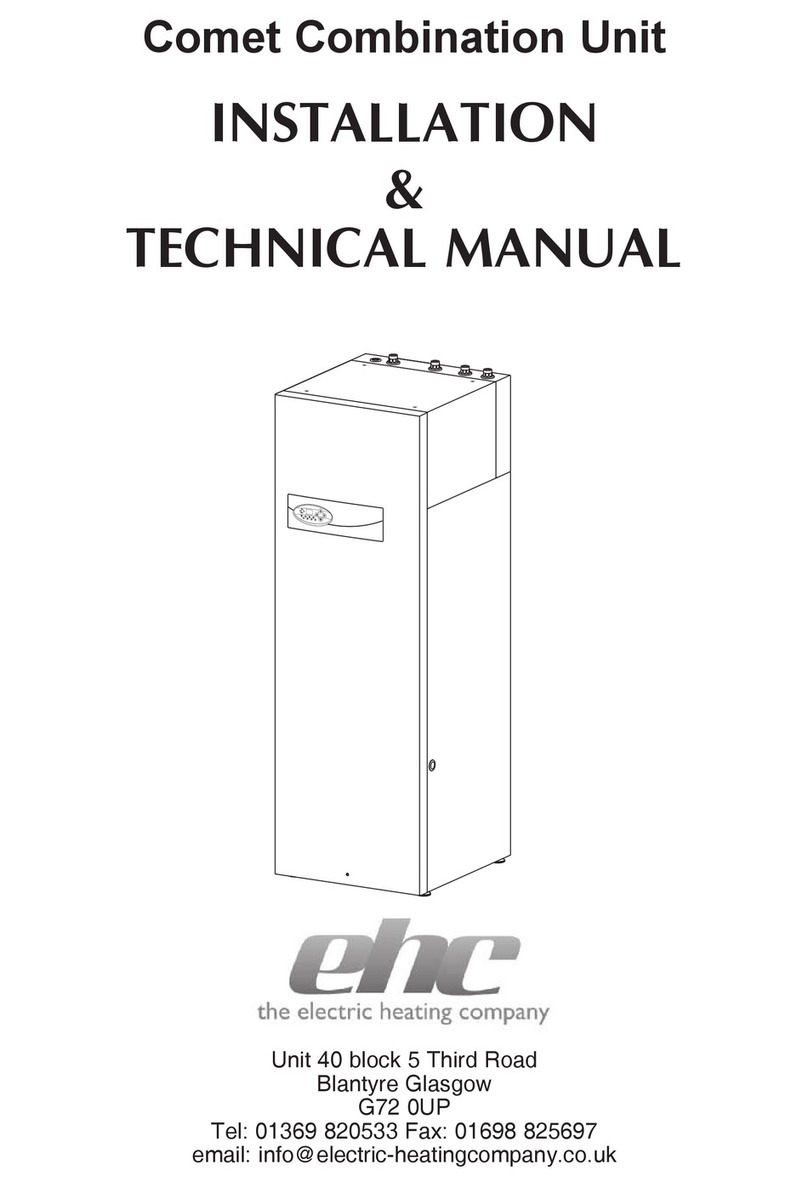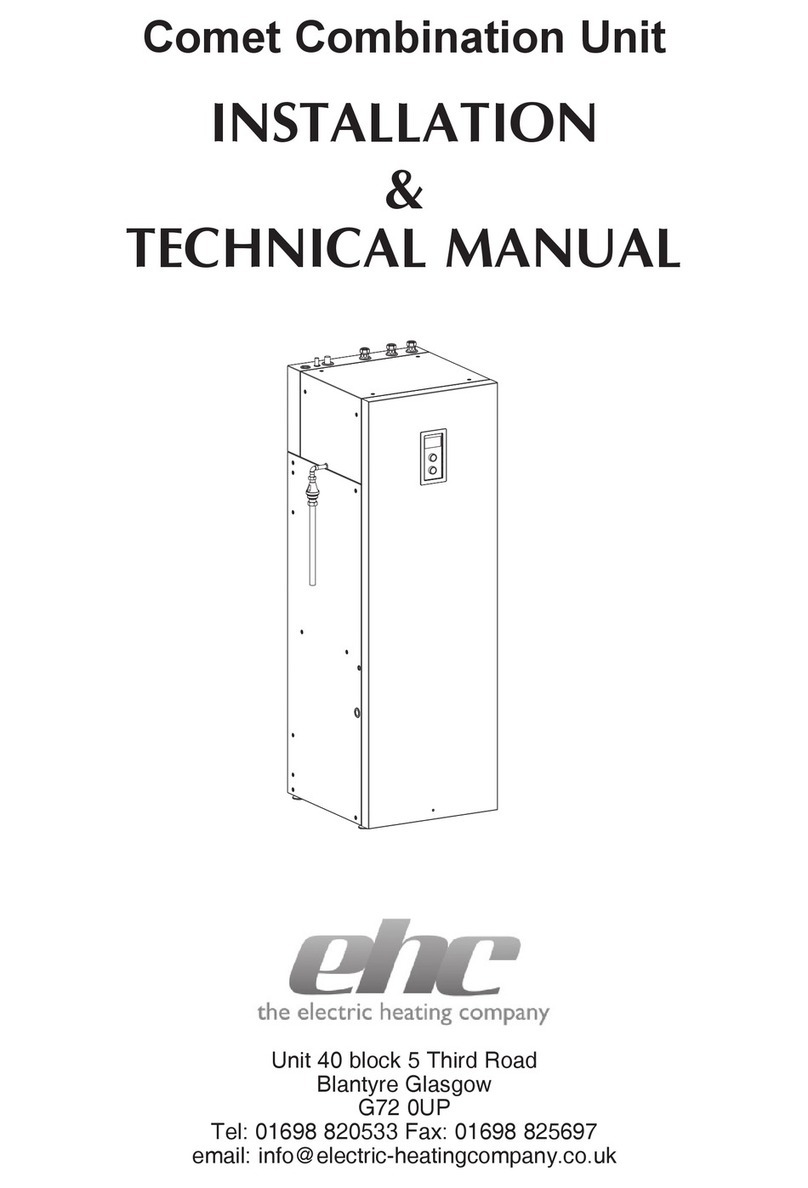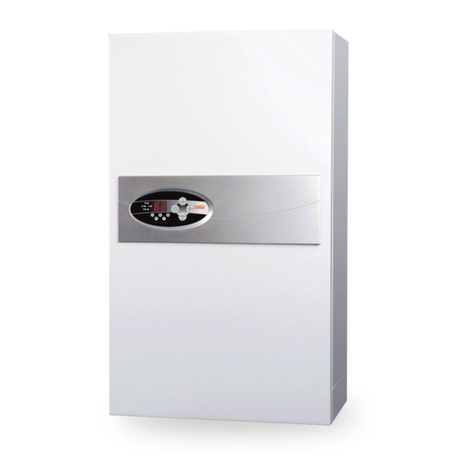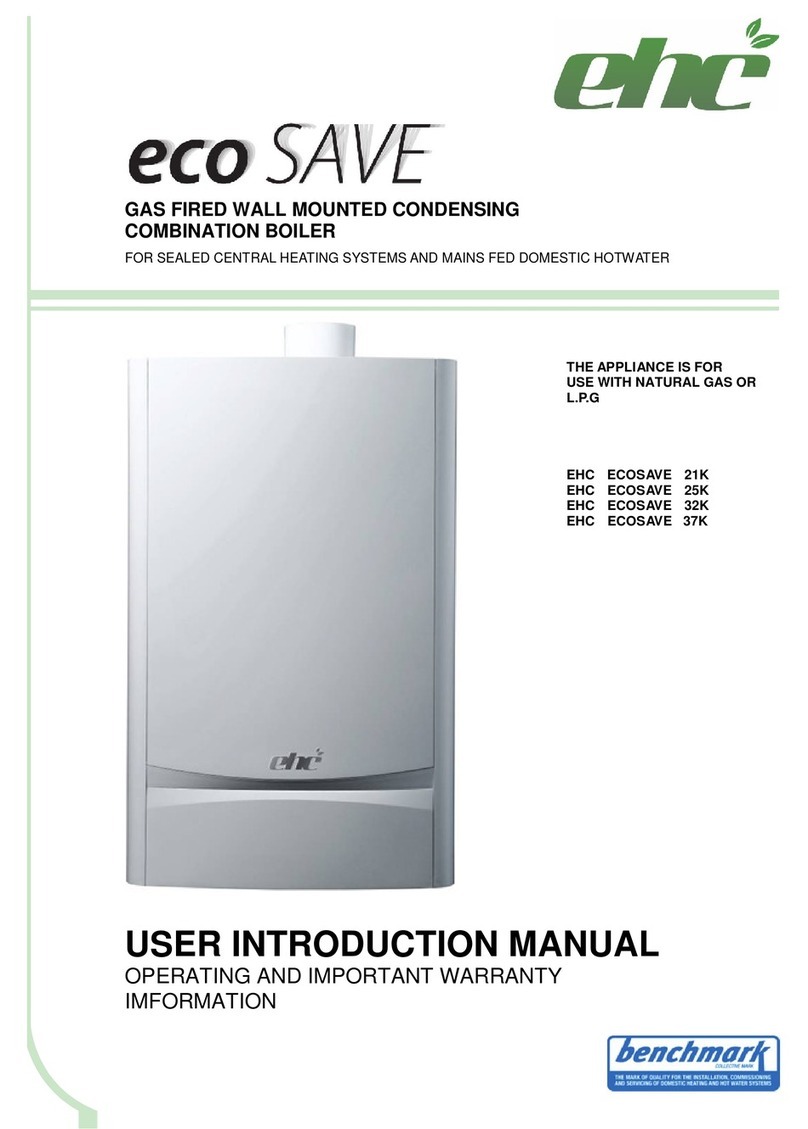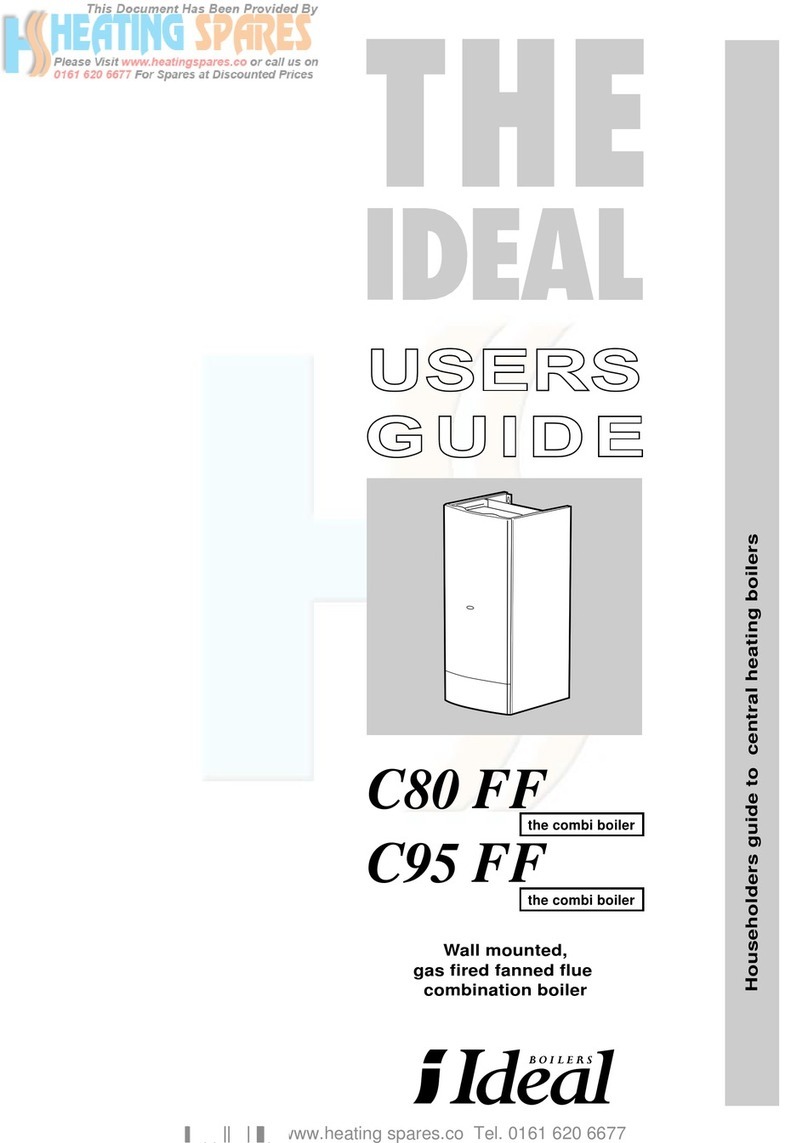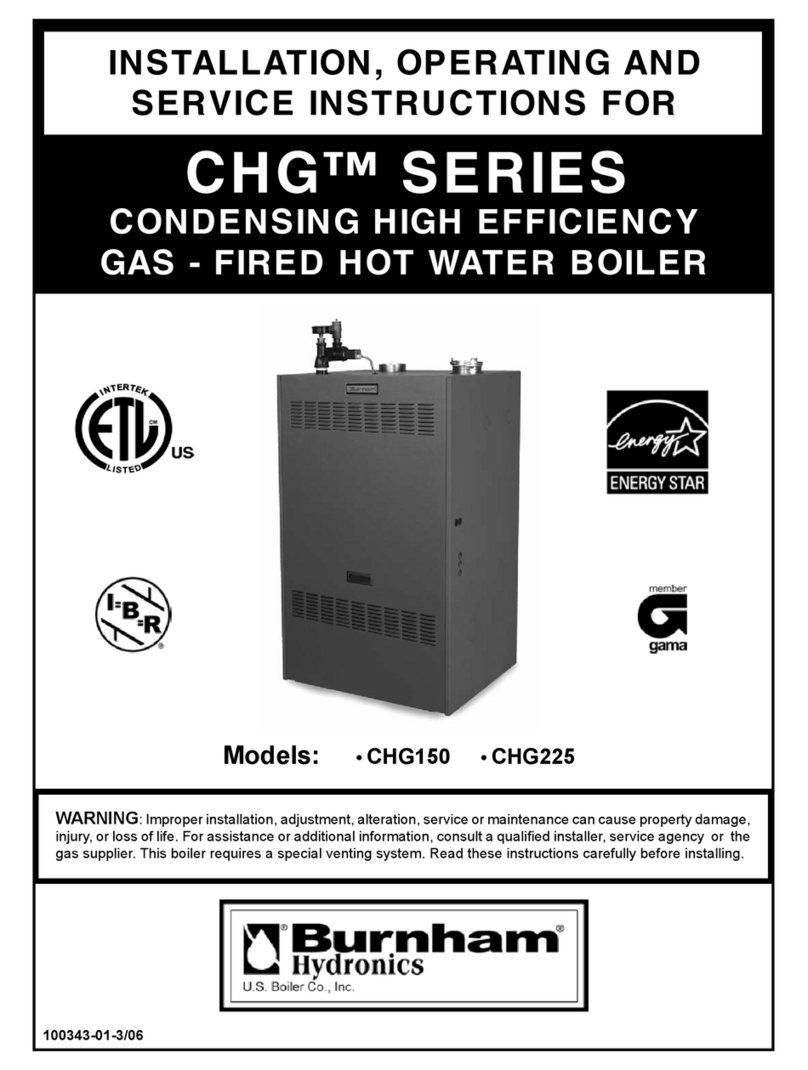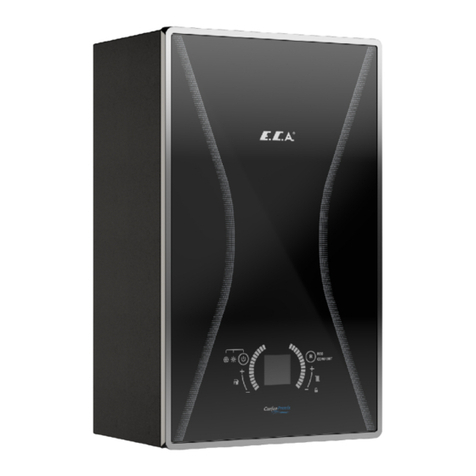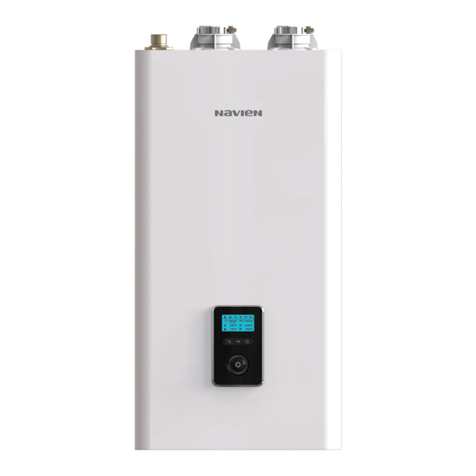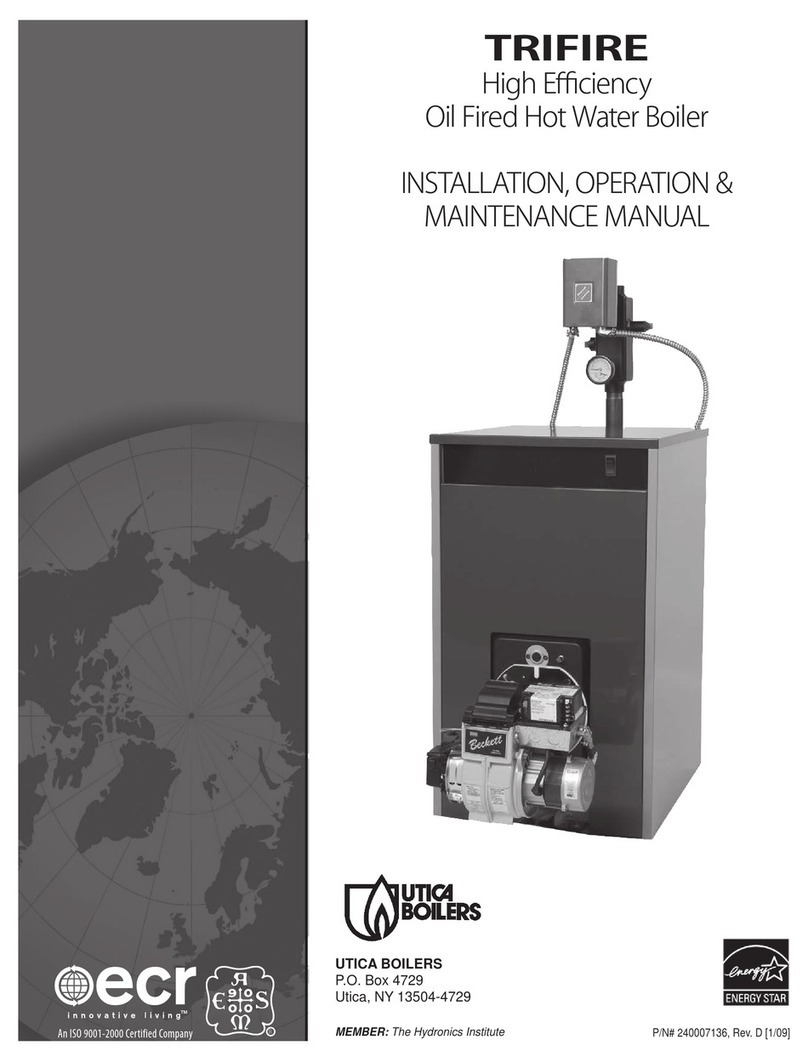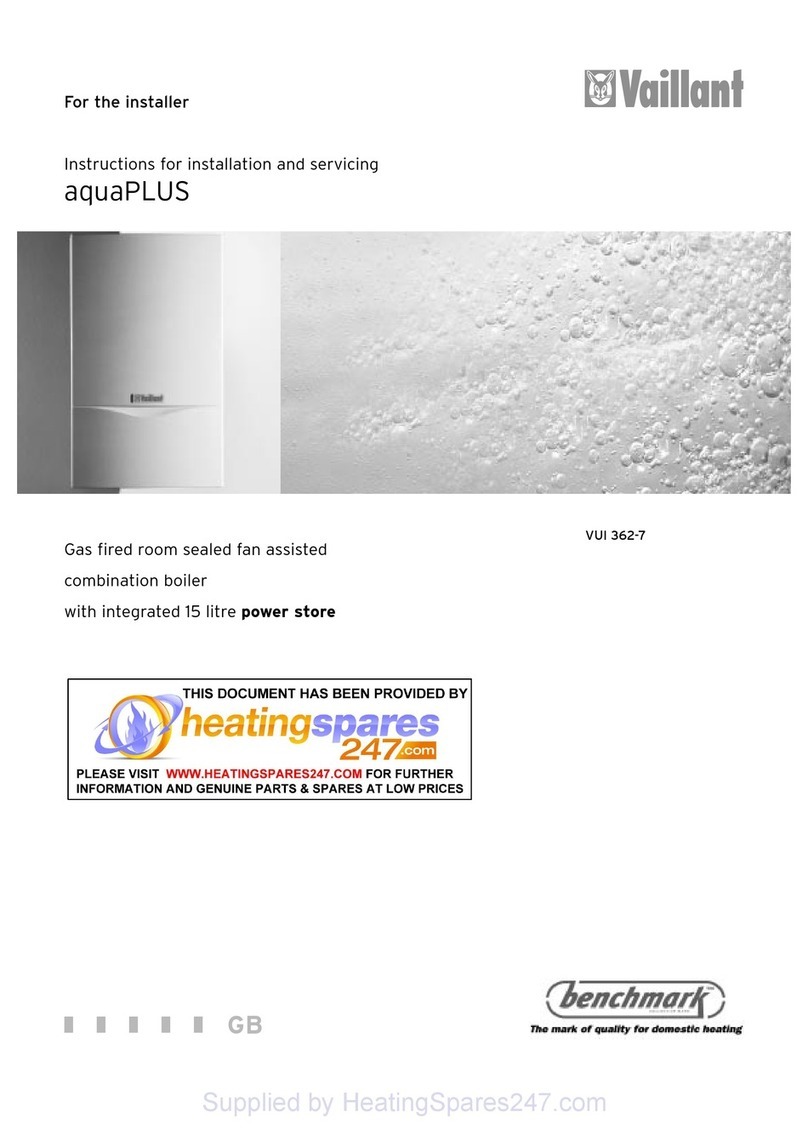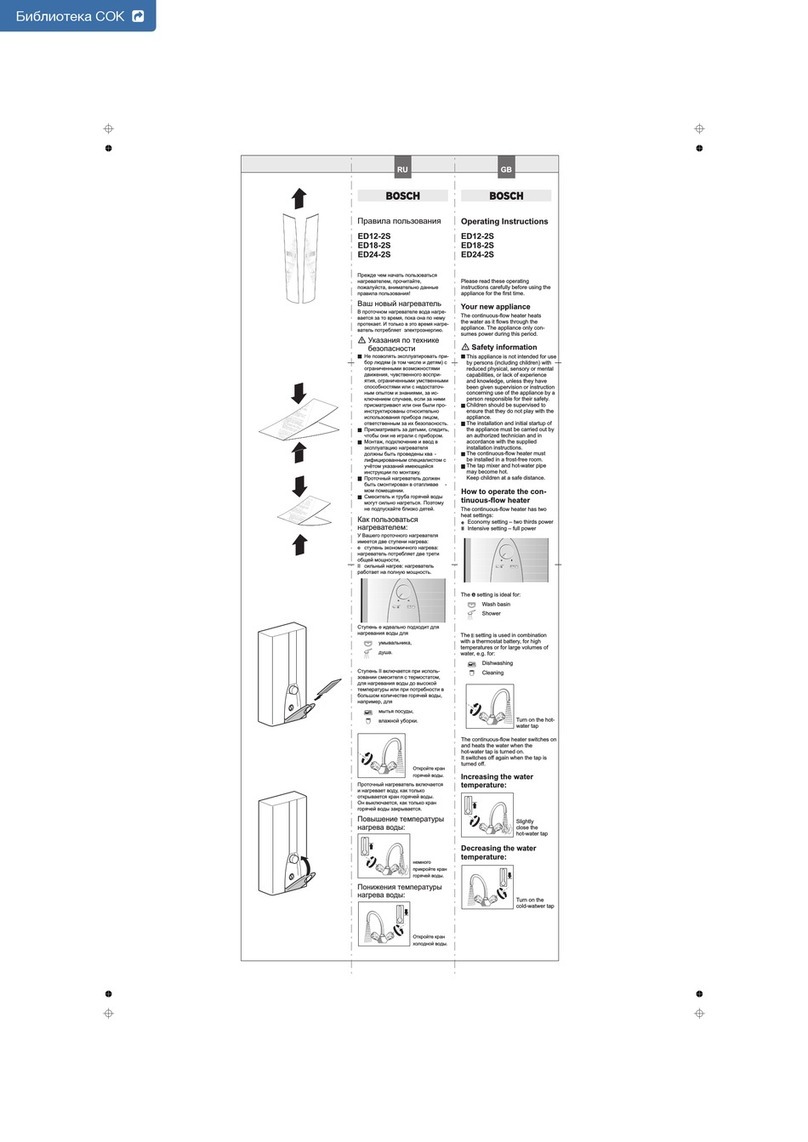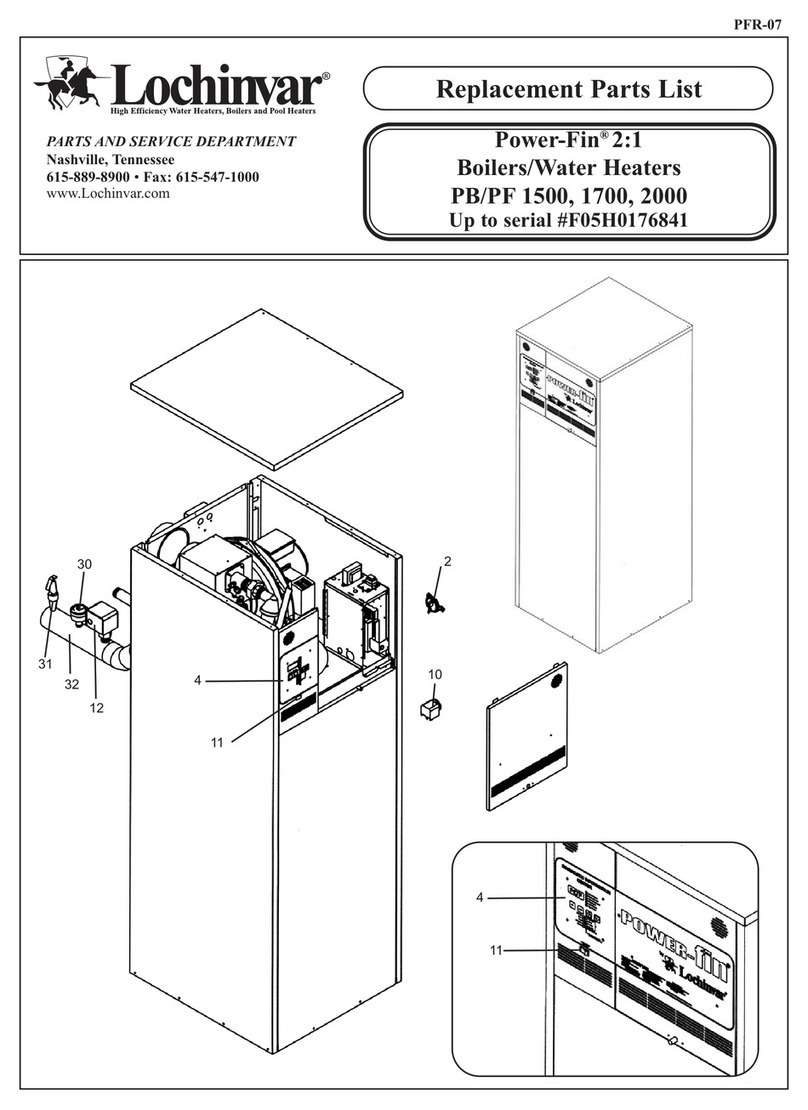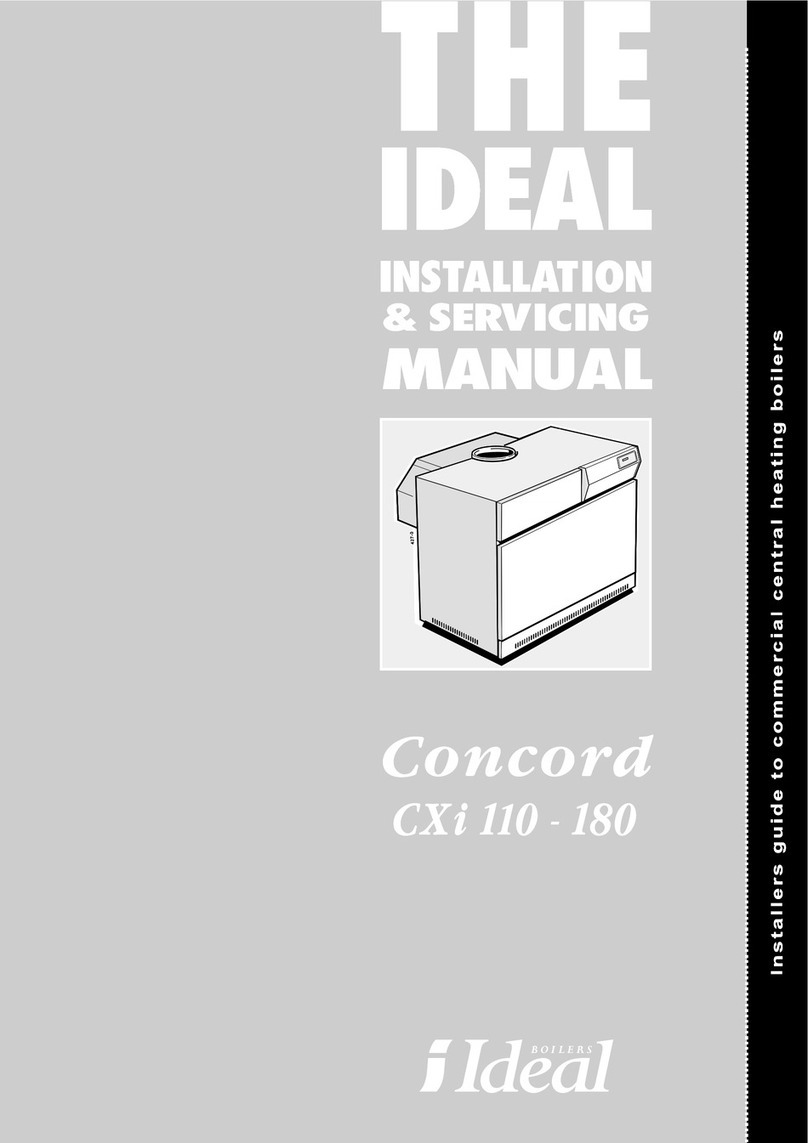
5
GB-016C_f.783,2
11. System types
The 6, 9, 12, 14.4, 36 & 48kW boilers can be used in various
system designs. Please refer to The Electric Heating Company for
more details on our Fusion Boiler for under floor heating. We
are able to supply a heat pack that contains the relevant control
valves, cylinder and room thermostats required to configure
an S plan heating system. The heat pack has all the necessary
components that you need to connect the systems controls and
plumbing configurations for S Plan design.
We also recommend the use of thermostatic radiator valves on all
radiators except in the room that has the wall thermostat fitted. If
a bypass radiator has been used in the system, it should be fitted
with lock shield valves and left in the fully open position.
If a bypass radiator has not been used then a system bypass of 2
metres of 22 mm copper pipe incorporating an automatic bypass
valve must be used and can be set to 8l/min from the front control
panel.
Systems should be designed to current building regulations.
12. Expansion vessels
All boilers up to 36kW have an internal 6L expansion vessel,
where the system volume is greater than 50L an additional
external expansion vessel of suitable size will be required. The
48kW fusion does not come with an integral expansion vessel
therefore it is the installers responsibility to correctly size and
install an expansion vessel within the system.
Water Loss
If water loss occurs due to natural evaporation, leakage or any
other breakdown in water seals, the boiler will not operate.
The boilers flow sensor needs a minimum of 5 litres per minute
to operate. If this cannot be achieved the boiler will shut down.
We recommend a minimum flow setting of 8l/min.
Investigation
Should BOIL OVER/ BOIL DRY /WATER LOSS occur, investigation
as to why the system has failed MUST take place. Power should
only be reinstated after the fault has been rectified.
The main overheat stat on the boiler can be re-set, this is
positioned at the top of the boiler market WT3. To re-set, push
the brass pin with a small screwdriver. The pin will click into
place when re-set.
ENSURE THAT THE MAINS POWER SUPPLY TO THE BOILER IS
SWITCHED OFF PRIOR TO RE-SETTING.
13. Commissioning
IMPORTANT:
TURN ON THE ELECTRICAL POWER SUPPLY TO THE BOILER.
MAKE SURE THAT THE PROGRAMMER IS NOT CALLING FOR
HEAT AT THIS STAGE!
FILL ING THE HOT WATER CIRCUT. (If Applicable)
1. Check the pressure in the potable vessel is set to 3 Bar
2. Check that all plumbing connections are tight
3. Open the furthest away tap outlet
Note: Make sure that the filling loop is closed at this stage!
5. Turn on the mains water supply to the unit
6. It will take a few minutes to fill the cylinder, once the water
comes through the tap outlet let it run
7. Open the other hot water outlets and purge all air out of the
system
8. Once fully purged close all the outlets and further check for
leaks
FILLING THE PRIMARY HEATING CIRCUT.
THE PRIMARY CIRCUT MUST BE FLUSHED IN ACCORDANCE
TO BS 7593
1. Connect the primary filling loop and tighten
2. Make sure that all primary connections are tight before filling
3. Open the filling loop and allow the system to start filling
4. Press the right arrow key on the boiler control panel until the
A (bar) led is illuminated
5. Fill the system to 2 bar, then start to purge the radiators until
all the air is out the system.
6. This will have to be repeated several times to fully purge the
system re-filling as you go.
System protection:
Failure to protect the system will invalidate the manufacturer’s
warranty.
1. Fill the system with cold mains water to the recommended
pressure 1.5 bar and check for leaks, then drain the system
thoroughly making sure all drain cocks are fully open and that
the system is completely drained.
2. Add Fernox F3 cleaner to the system at the furthest point
from the boiler, this is to allow the substance to fully dilute
throughout the system. If you are unsure of the correct dose
rate, contact Fernox on 03301007750 for advice.
3. Re-fill the system and circulate the F3 cleaner prior to the boiler
being fired up. Commission the system in the normal way. The
cleansing agent must be in the system for a minimum 1 hour
with the system running at normal operating temperature. A
longer period of time would be more beneficial to the cleansing
process especially if excess flux was used or is an old system.
F3 cleaner can be left in the system for up to a maximum of one
week running on a normal heating cycle. (We recommend that
existing systems are power flushed as per BS 7593 and PAS33
regulations)
4. Drain and flush the system thoroughly to remove the cleaning
agent and any debris or contaminants. This is a critical part of
the cleaning process and must be carried out correctly. Use a
rinse test meter (TDS), such as the Fernox CTM. The reading
must be within 10% of the mains ppm value.
5. After the system has been thoroughly flushed and TDS readings
are within 10% you can now add Fernox F1. This will protect
against the formation of scale, corrosion and microbiological
growths. It is crucial however, that for the protector to work
correctly, the system must be properly cleansed and flushed.
6. Now attach the label included within the Fernox F1 packaging
completed and attached adjacent to the boiler. We recommend
inhibitor levels are checked on an annual basis (usually during
the service) or sooner if the system content is lost.
This should be carried out using a Fernox inhibitor Test Kit.
Fernox Technical Service Helpline on 0870 870 0362 for




















